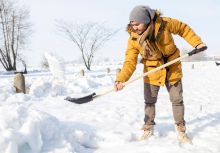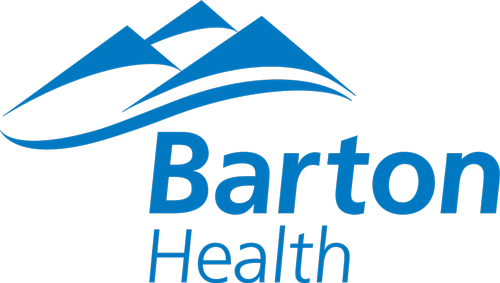
Extensive snow removal can take a toll on your body, as repeated movements like shoveling the weight of snow is strenuous on your back. It causes weaker muscles to do more work and overstretches the spine's ligaments, causing lower back pain or strain.
Most back pain gradually improves within a few weeks after home treatment and self-care. Rest, periods of heat application, and stretching have been known to relieve most back pain. A physical therapist can provide healthy back exercises that may include stretching and strengthening the core. Avoid actions that stress your back further, such as carrying heavy loads of wood, twisting to throw snow, and any high-impact activities like skiing or snowboarding.
Sometimes, back pain can be intense and persistent, and it may spread to the legs or hips. This pain is caused by the narrowing of the passages through which nerves exit the spine. This narrowing or pinching can cause inflammation of the spinal nerves that results in pain and sometimes sciatica (radiating pain running down one or both legs from the lower back).
A number of conditions may contribute to this narrowing, including herniated or degenerative discs, "slipped" vertebrae, spinal stenosis (narrowing of the spine), joint cysts, bone spurs, or thickening ligaments in the spine due to spinal arthritis. Despite the complexity of these conditions, associated pain does not have to be permanent, and many patients are able to recover with non-surgical treatment.
Patients exhibiting acute (non-chronic) pain from these conditions have proven to benefit from epidural steroid injections (ESI), a minimally invasive procedure that can help relieve pain caused by inflamed spinal nerves. Epidural steroid injections have been used for decades, and are considered an integral part of the non-surgical management of sciatica and lower back pain.
The goals of an epidural steroid injection are to control pain by reducing inflammation, improve mobility and function in the lower back and legs, and allow the patient to make progress with a customized treatment program. This can include a comprehensive physical therapy and rehabilitation program, chiropractic care, acupuncture, or additional medication.
The relief can last months, easing the pain enough so patients can continue a physical therapy program and other conservative treatments to improve healing. Epidural steroid injections are often repeated if the treatment proves effective.
Though necessary, snow removal can contribute to many aches and pains. When it comes to your back, manage your symptoms with modifications and self care, and when you need extra help, speak with your care provider about non-surgical options for back pain.
To learn more, call (530) 543-5554 or visit BartonOrthopedicsAndWellness.com.
Visit BartonOrthopedicsAndWellness.com



 Dr. Greg Burkard Jr. is an interventional pain and sports medicine physiatrist with Tahoe Orthopedics and Sports Medicine, treating patients at Barton’s Center for Orthopedics & Wellness in South Lake Tahoe, and in Carson City, NV.
Dr. Greg Burkard Jr. is an interventional pain and sports medicine physiatrist with Tahoe Orthopedics and Sports Medicine, treating patients at Barton’s Center for Orthopedics & Wellness in South Lake Tahoe, and in Carson City, NV.




